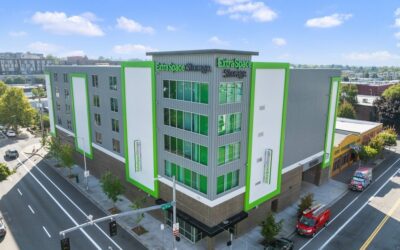Steven Weinstock is the national director of the Marcus & Millichap Self Storage Division. Weinstock, based out of Chicago, also serves as a first vice president and regional manager of Marcus & Millichap’s Chicago Oak Brook office and specializes in investment commercial real estate sales. SpareFoot talked with Weinstock about the 2020 investment outlook for self storage.
SpareFoot: Has the self-storage industry reached its peak in this real estate cycle for development? What does the development pipeline look like for 2020?

Is there still an upside for self-storage real estate investors?
“The short answer is yes. There is still an upside. Prices and values continue to be on the rise. The average self-storage cap rate is 6.5% and that compares to the 10-year Treasury at 1.6% and compressed multifamily cap rates of 5.5%. As an investor, if you move from a lower cap rate multifamily into self storage, you can be rewarded by the difference in cap rates by over 100 basis points. There’s a nice story there, and I see some investors considering either selling multifamily or other product types to get into self storage or adding self storage to diversify their portfolios.”
“A self-storage owner can capitalize right now on strong appreciation by selling to a new buyer who can use technology to get into the self-storage industry from another sector such as multifamily, retail or office, so it’s a unique timeframe.”
Where are you seeing the strongest markets and most activity?
“Population and job growth in the South make those markets attractive. If we look at population growth then Southeast Florida, Austin, Nashville, Portland, and Raleigh-Durham are all attractive for self storage. Phoenix is still pretty active along with Charlotte, North Carolina. In terms of inventory growth, we’ve seen a lot delivered in Knoxville, Tennessee; Miami; Sacramento, California; Denver; New York City; Minneapolis-St. Paul; Fort Lauderdale; Orlando; Nashville; and Portland.”
Self storage has emerged during this real estate cycle as a darling sector, which has resulted in more competition among investors. In what ways has that impacted the industry?
“On the upside, it’s created broader diversity among investors, which translates into people having fresh ideas. New investors who are using technology in different ways has energized the industry. On the downside, there’s a lot more competition and with competition you can get people who probably shouldn’t be in the business. They can tamper with pricing and service that can negatively impact the industry as a whole. There are also some unique challenges because some developers have built facilities in less-than-optimal locations.”
In terms of the capital markets, what do you anticipate in terms of funding over the next couple of years?
“It is available, but lenders are definitely tightening their criteria. Although national and regional banks and insurance companies that typically funded self-storage are now pulling back, we are seeing debt funds and CMBS stepping in to fill the gap, but they typically come with tighter criteria and higher borrower costs.”
“Construction financing is probably the most cautious right now. Properties that opened more recently, in the last two years, are taking longer to lease up. So their growth projections are probably incorrect. They thought it would take two years to lease up and it’s now taking longer.”
“That begs the question: If I did temporary financing for my lease-up what happens when I don’t lease up in the timeframe I planned on? Now I’ve got to go refinance. Extra Space Storage has stepped in and launched a bridge product to cover that gap because they understand it.”
Do you anticipate the current presidential election season having any impact on the sector?
“There’s always a potential uncertainty in the financial markets. We see things happen in the political process that cause the market to react positively or negatively. But if we look bigger picture, we would need a material event to really impact self storage such as declining economic growth, rising unemployment, or slowing consumer spending. I’m not sure we see these on the horizon.”







